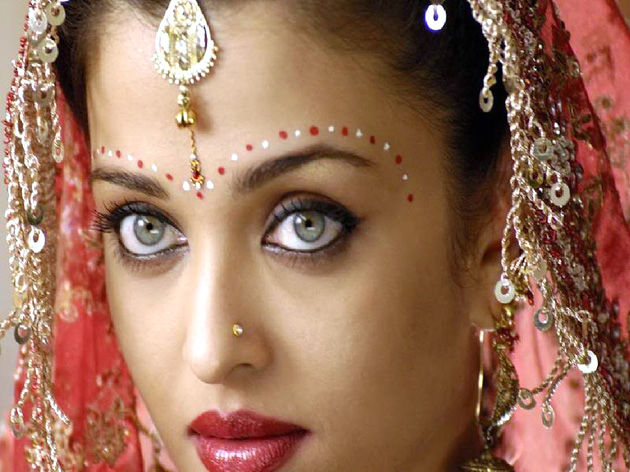Pankhuri Aggarwal
A magnificence is multiplied hundred and thousand times when she wears a bindi. Not even a single Indian apparel would ever be appropriate without a bindi. Each bindi worn on the forehead says something about the women’s perspective of fashion in the Indian society. Aside from gorgeous saris and outstanding gold jewelry one of the most universally famous body embellishments worn by Indian women is the red dot on the forehead, the bindi. As many languages are spoken throughout India, bindis are otherwise known by many other names including bottu, kumkum, pottu, sindoor, teep, tikli, tika, tilak, tilaka, and tilakam. The word “bindi” comes from the word “bindu” which means “drop” or “dot” in Sanskrit. According to cohorts of Hinduism, bindi is symbolized as chakra which is the exit point for kundalini energy. The bindi is said to retain vitality and reinforce concentration. It is also said to guard us against demons or bad luck. The bindi also epitomizes the third eye. a housewife said, “Traditionally I use to see my mother using kumkum which is red turmeric and wearing it on her forehead which was a symbol of bindi. She even used to use sandalwood paste, saffron, paper sticker, fruit seeds as bindi. Today maximum women would not even know how these things are used for making bindi”. When an Indian woman decorates her forehead with sindoor or bindi, she is just following a convention that goes back at least thousands and thousands years. Wear a bindi or a decorative mark on your forehead and you will never go unobserved as it is very eye-catching. It is no wonder that bindi has found its way to the international fashion world also. In fact the Bindi is one of India’s best renowned and acknowledged symbols in the world. In fact the bindi has turned out to be a fashion statement, not only in India, but also in the west. There are many numbers of young Indian girls who are spotted with a bindi in the west as well. The question does still exist, is bindi still a fashion statement or not? In this generation and phase, the bindi is neither in nor out. A bindi does fit very charmingly with the gorgeous Indian sari, which actually builds an unspooled magic.
A fashion designer said, “For generations, bindi has been the most eye-catching attractive of all forms of body beautification. In fact, in the all adornments for personal grooming, bindi is the first part of our decoration and has a strong religious implication also”. She further added, “The purpose of wearing a bindi can vary. If it covers the entire forehead in three horizontal lines, then it denotes the wearer is an ascetic or belongs to a particular sect. Sometimes, the bindi is used for mere embellishment purpose by females. In this case, you may also find her wearing a small jewelry instead of the typical red dot”. Another fashion designer said, “With mutable fashion, women try out many shapes and designs. It is, at times a straight vertical line or an oval, a triangle or miniature creativity made with a fine-tipped stick, dusted with gold and silver powder, studded with beads and crusted with glittering stones. The advent of the stick-bindi made of felt with glue on one side, has not only added colors, shapes and sizes to the bindi but is a creative easy-to-use substitute to the powder. Today, bindi is more of a fashion statement than anything else, and the number of young performers sporting bindis is awe-inspiring”. When we take the name of bindi first thing that appears in our mind is the red colour. Do we ever think why red? Hence here’s perhaps one of the reasons—it represents love, honor, prosperity, strength. Traditionally speaking, in ancient times there was a practice of making blood sacrifice to god, but over the time it turned into offering red gifts and wearing red.
Hence this explains why red colour is most often seen as a colour of the bindi. Customary bindis hold an astonishing ethnic account, but believe it or not, the bindi “trend” has been around longer than you think. Both in the past and present the Bindi has been used for decorative purposes. It is applied on the forehead, arms and navel to make fashion statements. Sadly everything of significance of wearing a Bindi is lost for the common man and only those creating variations among people, enhancing the peripheral world instead of dwelling on the in-house world remains. But still the tradition of wearing a bindi can never be out. It is also the central point of the base of the conception and foundation itself, symbolizing auspiciousness and good fortune. What in today’s world is left is ingenuity, creativity and hence be more groundbreaking and your proclamation of style with bindi shall be at the topmost.
Trending Now
E-Paper


